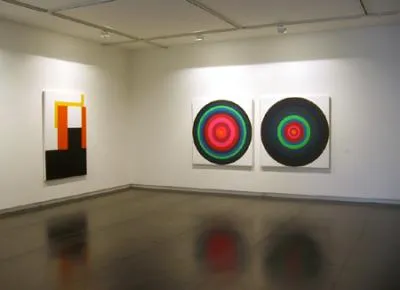
Born in California within five years of each other, painters Mary Henry (b. 1913) and Helen Lundeberg (1908–99) each had lengthy artistic careers. During the decades they were active as artists, their work converged and diverged in striking ways. Both worked for the Works Progress Administration (WPA ) in the 1930s, making prints and murals in the regionalist style that dominated American art during the period. Lundeberg later moved to a style she called Post Surrealism, producing intriguing and incongruous still lifes and landscapes. After attending a lecture by constructivist Laszlo Moholy-Nagy, Henry began creating the hard-edged geometric paintings that she would make for the rest of her career. By the 1950s, Lundeberg, too, had moved toward geometric abstraction, painting linear compositions suggestive of landscape or architecture. This exhibition will trace the trajectories of these two women from their early works to those made in the later decades of their lives. Despite the fact that both Henry and Lundeberg were born and spent much of their lives in California, worked in a geometric style and were women painters, their pairing tells a story broader than that of their similarities. Featuring work that ranges from regionalist lithographs to Post Surrealist compositions to large-scale geometric abstraction, the exhibition illuminates not only the careers of these painters but the history of modernism in the United States.